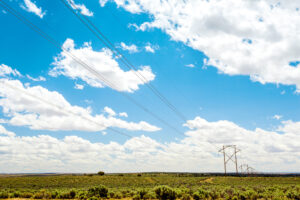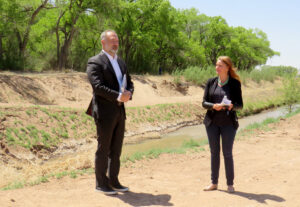What’s driving southern Montana’s deadliest avalanche season in more than a decade?

There have been good winters and there have been bad winters, but during an average one, avalanches claim the lives of three backcountry recreationists in Montana. Compared to other mountainous states in the West, Montana is usually somewhere in the top five for total avalanche deaths, but rarely tops the list. In the last decade, half of the state’s avalanche fatalities have been among motorized users, typically snowmobilers.
But so far this winter, three snowmobilers and one snowbiker have died in three separate incidents in the Cooke City and West Yellowstone areas. It’s the highest avalanche death tally among motorized users in the state since the 2011-2012 season, a uniquely challenging season that led the Gallatin National Forest Avalanche Center to issue a record five official avalanche warnings.
This year has been almost as deadly for snowmobilers and snowbikers as the 2011-2012 season despite the absence of the kind of extreme avalanche conditions that contributed to so many fatalities a decade ago. (Six people, including four snowmobilers and one snowbiker, died in avalanches that winter.) This year’s fatalities also broke a five-winter streak during which there were no snowmobiling fatalities near Cooke City, one of the state’s most popular snowmobiling destinations.
Avalanche forecasters lament a lack of statistics charting winter backcountry use over time (for all groups, not just motorized users), but this year’s increase in avalanche fatalities seems to coincide with an overall increase in the number of motorized winter sports enthusiasts recreating in Montana, particularly in Cooke City and Gallatin County. Related information such as annual snowmobile sales, demand for snowmobile rentals, the number of avalanche education courses available in southwest Montana, and the volume of snowmobile-related search and rescue calls supports what avalanche forecasters and industry insiders describe: a surge in winter backcountry recreation.
The season’s fatalities started Dec. 27 with an avalanche north of Cooke City on Scotch Bonnet Mountain. Two snowmobilers from Minnesota riding in a group of eight were buried by a 300-foot-wide avalanche that broke 4 to 5 feet deep. All eight members of the party were wearing avalanche beacons, but none reportedly read the day’s avalanche forecast prior to heading out. The members of the party who were not caught in the avalanche located and dug out the two buried individuals, the first within about 30 minutes, the other about half an hour later. Efforts to revive them with CPR were unsuccessful.
On Feb. 6, avalanche debris suffocated an experienced snowmobiler who had taken multiple avalanche awareness classes and was familiar with the Lionhead area near West Yellowstone where he was riding. He died after a relatively shallow and narrow avalanche — it was 75 feet across and broke at a depth of 4 to 11 inches — caught him, swept him into a tree, and buried him. His brother dug him out between 15 and 25 minutes after the slide. Members of his party attempted CPR but were unable to resuscitate him.
Less than two weeks later, another fatal avalanche occurred in Cooke City, this one involving a snowbike, essentially a dirt bike modified for snow travel. The victim was a 34-year-old Bismarck, North Dakota, resident who’d ridden in the area twice before. Though he wasn’t fully buried by the avalanche — his party reported that his arm was visible and his airbag, a piece of gear that helps users stay closer to the surface of the snow in the event of a slide, was deployed — his head was under about a foot of snow. Lack of oxygen is often what kills avalanche victims. It took an estimated “15 minutes tops” to dig him out, according to information provided to the Gallatin National Forest Avalanche Center. Efforts to revive him with CPR and an automated external defibrillator, or AED, were unsuccessful.
Doug Chabot, director of the Gallatin National Forest Avalanche Center, said he’s reluctant to read too much into the three incidents, but he did say he’s seen an increase in backcountry winter recreation as gear has improved, helping drive a shift in where and how people pursue snow-based recreation.
“Backcountry use has exploded,” he said.
Chabot said conversations with Montana Fish, Wildlife and Parks about snowmobile sales and registrations support what he’s seen and heard. (Montana Free Press contacted FWP for snowmobile registration data in late February, but that information has not been provided by press time Wednesday.)
Chabot said he takes heart in the fact that during two decades of growth in backcountry recreation, the United States hasn’t seen a parallel rise in fatalities.
“There [have] been estimates over the last 20 years that [recreational backcountry use has] gone up 10 times or more, and yet we are not seeing a 10-time increase in our average fatalities. We’re not looking at 250 avalanche deaths per year, we’re looking at 25,” Chabot said. “People are getting educated, they’re making better choices. Something’s working with that.”
He also said the amount of avalanche education available to the public has ballooned over the past 15 years, and engagement with material put out by the center has “gone through the roof.” On any given day, content made available via the center’s email list, website and social media pages garners 10,000 views, he said.
When things do go wrong in the backcountry, Chabot said, it’s usually the same issue that leads to trouble. Snowmobilers, snowbikers, snowboarders and skiers might tell themselves a slope isn’t avalanche-prone because they’ve never seen it slide, or because the slope tends toward the gradual side of what will slide, or because they’re at the bottom of the slope and the idea that they could shake tons of snow loose from below — an event called a remote trigger — is hard to fathom.
But that’s not how travel in avalanche terrain works, Chabot said.
“It’s sort of binary — you’re either in [avalanche terrain] or you’re not, and a lot of people try to thread these needles,” he said. “That’s why it doesn’t always work when skiers or snowmobilers try to split hairs. … You’re starting to play a game [that] doesn’t work in your favor.”
SNOWMOBILE-RELATED INJURIES
Avalanches aren’t the only hazards killing snowmobilers in southern Montana this winter. As of March 7, Gallatin County Search and Rescue volunteers have responded to nearly two dozen accidents — primarily leg, arm and head injuries — serious enough to require ambulance or helicopter transport to a hospital. Most involved a collision with a fixed object, such as a tree, though rollovers and collisions with other snowmobilers have also occurred. Two Gallatin County snowmobile accidents Gallatin County Search and Rescue responded to were ultimately fatal — three if you count the avalanche fatality near Lionhead.
In February alone, Gallatin County Search and Rescue volunteers responded to 15 snowmobile-related accidents, mostly in the southern end of the county between Big Sky and West Yellowstone. On some days last month, the state’s busiest search and rescue organization fielded multiple calls for assistance locating or treating and transporting a lost or injured snowmobiler.
“We’re getting hammered this year,” Gallatin County Search and Rescue commander Scott Secor said. “Basically our bread and butter during the winter is responding to snowmobile accidents with extremity injuries.”
Secor said most snowmobile crashes his organization has responded to this winter have involved recreationists on machines they rented in West Yellowstone.
Mitch Tuttle, owner of High Mark Rentals in West Yellowstone, estimates his rental revenue is up 30% this year from pre-pandemic levels. He said many of his customers have little or no experience with the machines, and those riders are more apt to run into a tree or flip their snowmobile.
Tuttle attributes the increased interest in snowmobiling to five things: record Yellowstone National Park visitation, the COVID-19 pandemic leading people to the outdoors in droves, an economy that’s increasingly accommodating of remote work, an expansion of direct flights into and out of the Bozeman Yellowstone International Airport, and the wallet-fattening effects of strong stock market returns and federal pandemic relief cash.
Tuttle said another indication of swelling interest in the sport is the delay he’s encountered trying to expand his rental fleet. Some manufacturers might be in more of a pinch than others, but he said all three brands he carries — Arctic Cat, Ski-Doo and Polaris — are backed up. As of March 4, he was still waiting for eight machines he ordered last March to arrive. Tuttle said he attributes the bottleneck to both high demand and pandemic-throttled supply chains.
According to an International Snowmobile Manufacturers Association report, 59,234 snowmobiles were sold in the United States last winter, a 16% increase from the previous winter. The report also notes that total registrations in North America topped 1.9 million. The U.S. alone added more than 70,000 registrations to its rolls, and used models were also hot sellers. “The snowmobile industry is now realizing the lowest number of used or non-current models available in its history,” according to the report.
ISMA President Ed Klim said numbers for the 2022 sales season (November 2021 through March of 2022) aren’t yet available, but his hunch is that they’re going to be up a little from the previous year. “The question is how much,” he said.
“[Last winter] a lot of folks bought snowmobiles for the first time because it’s a great way to recreate during a pandemic. It’s an individual activity, you’ve always got enough space between you and everybody else … People felt more comfortable doing it,” he said, adding that many would-be vacationers skipped air travel in favor of recreation closer to home.
Klim said areas with reliable snowfall — places like Michigan’s Upper Peninsula and higher-elevation spots in Montana — are particularly popular right now. Both Cooke City, (elevation 7,580 feet) and West Yellowstone (elevation 6,667 feet) check the high-elevation, high-snowfall boxes.
“The snow’s on the ground out west,” Klim said. “When I book a vacation, we head west, we go to Montana. We like to ski at Big Sky [Resort] and we snowmobile in the Gallatins. We’re typical Michiganders in that respect.”
Klim said he’s also seen an increase in demand for, and participation in, avalanche education during his 25-year tenure in the industry.
“Hopefully everyone pays attention to the avalanche [forecasts] and they get trained up and they have the right equipment,” he said.
Whereas Colorado, Alaska and Washington have historically eclipsed Montana, the Treasure State has borne the brunt of avalanche fatalities this season. So far this winter, avalanches have killed 11 people in the United States, quite a bit less than the average of 26. The only other state that’s lost a motorized user to an avalanche this season is Idaho. All other incidents involved skiers or snowshoers.
Colorado Avalanche Information Center Director Ethan Greene said it still very much remains avalanche season, even as the days lengthen and the occasional rainstorm begins replacing snowstorms in lower-elevation parts of the Rocky Mountains.
“We’re on track to be a little below average, but because we have pretty small numbers it could switch pretty quick,” he said.
This article was originally posted on What’s driving southern Montana’s deadliest avalanche season in more than a decade?







